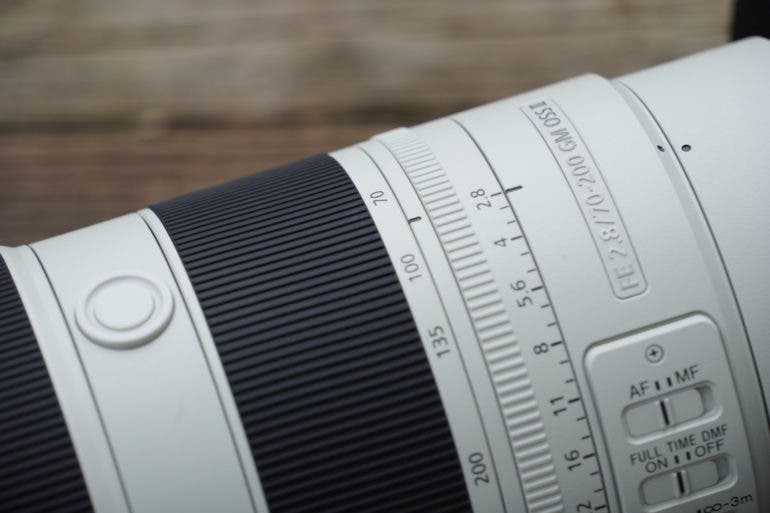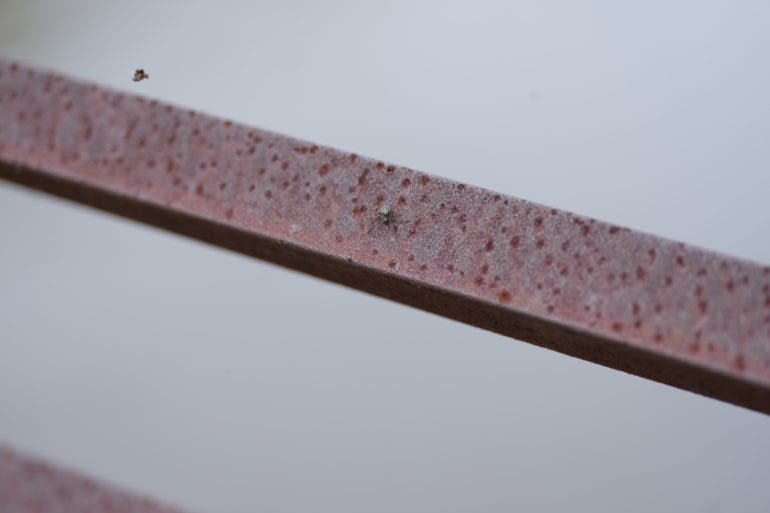Improved and Really Fantastic: Sony 70-200mm F2.8 GM OSS II Review
As other manufacturers have only recently introduced their first 70-200mm mirrorless workhorses, Sony is upgrading the five-year-old 70-200mm f2.8 GM OSS. And Sony-tographers are going to be pleased. The Sony 70-200mm f2.8 GM OSS II has a Mark II in the name, but many of the updates feel more significant than that. The lens is significantly lighter and the autofocus now has four motors and a lower close-up limit. Oh, and there’s a dedicated aperture ring too.
As a workhorse lens, however, the lens is going to be pricey. And the original will remain available, at least for now. So what do photographers get with the Sony 70-200mm f2.8 GM OSS II?
Too Long, Didn’t Read
The Sony 70-200mm f2.8 GM OSS II has quite a few upgrades from the original. The autofocus is faster, and also works much better on close-up subjects. The sharpness has improved and the lens significantly lighter, yet Sony still managed to add a dedicated aperture ring. It’s a lens with a lot of technical greatness.

Sony 70-200mm f2.8 GM OSS II Pros and Cons
Pros
- Lightweight
- Excellent autofocus
- Dedicated aperture ring
- Excellent sharpness and colors
- Solid stabilization
Cons
Gear Used
I used the Sony 70-200mm f2.8 GM OSS II with the Sony a1. I also used the old version of the lens alongside the new one to note the differences.
Innovations
As a Mark II lens, the innovations to the Sony 70-200mm f2.8 GM OSS II are subtle but noticeable. The lens is nearly 30 percent lighter, which even slides it a few grams under Canon’s mirrorless 70-200mm. It’s the lightest, bright aperture, autofocusing 70-200mm, Sony says. The lens uses a new autofocus design with four XD linear motors. Sony says that focusing speed is up to four times faster and tracking is up to 30 percent more accurate.
Sony 70-200mm f2.8 GM OSS II Tech Specs
Sony provided the following details for the Sony 70-200mm f2.8 GM OSS II during a press conference:
- Constant f2.8 aperture
- Stabilization
- Includes the following coatings: XA, ED Asph., Aspherical, Super ED, Nano AR II, F coating
- Updated circular 11 blade aperture
- 4 XD linear autofocus motors
- .4m minimum focusing distance
- Constructed from 14 groups and 17 elements
- Floating and internal focusing
- Compatible with 1.4x and 2x teleconverters
- Weighs about 1,042g or 36 ounces
Ergonomics

In looks and size, the Sony 70-200mm f2.8 GM OSS II appears very similar to the previous lens at first glance. But, there are a few welcome refinements. The first one is noticeable as soon as you pick up the lens: it’s nearly 30 percent lighter than the original. The Sony 70-200mm f2.8 GM OSS II weighs about 36 ounces. That’s light considering the wide aperture and telephoto capabilities. The size, however, hasn’t changed much. It measures roughly eight inches long.
Dressed in Sony’s off-white color, the lens uses a tripod collar close to the mount. The handle portion of the collar is removable, while the ring itself remains on the lens. The handle has three different sized tripod screws at the bottom.

Just after the tripod collar is a bank of controls on the left side of the lens. From top to bottom, those controls are the AF-MF switch, Full-Time DMF On/Off, the focus limiter, OSS on/off, the OSS mode (1, 2, and 3), and Iris Lock. That last control is further down the lens, nearly hidden underneath the handle of the tripod collar. The Iris Lock can be used to keep the aperture ring in the auto position, or to prevent the ring from entering the auto position.

After the row of switches, the Sony 70-200mm f2.8 GM OSS II houses a dedicated aperture ring. Ergonomically, this is the biggest difference between the original and the II. I prefer adjusting the aperture on the lens itself over the control dials on the bottom of the camera. On the right-hand side, there’s a switch to turn the click on and off. This allows you to choose if you want that satisfying click with every setting change, which also prevents accidental bumps. Or, for video, you can turn the click off for a smoother turn.

That ring is followed by the zoom ring and a set of custom buttons. (The two buttons are set to control the same function, there are just two so it’s easy to access whether holding the camera horizontally or vertically.) The final ring is the focus ring.

The front of the lens accepts 77mm filters. The lens ships with a lens hood, which also has a door underneath so you can still use a circular polarizing filter.
Build Quality

While there are a few extras in the build and on the inside, the new 70-200mm feels just as robust as the original. Plastic is necessary to keep the lens from being too heavy, but it’s weather-sealed and feels great in the hands. While it’s lighter than the first, it doesn’t feel any less robust.
I gave the lens a good splash and it didn’t affect the performance. I also didn’t spot any noticeable sensor debris after the splash. While I only had a few days to spend with the lens, I didn’t have issues with dust getting inside the sensor.
Autofocus and Stabilization

The autofocus performance of the Sony 70-200mm f2.8 GM OSS II is quite an impressive feat. I photographed my toddler running towards the camera, and only about five percent of the shots were slightly soft. Granted, an Olympic runner or a sports car is going to move faster and probably introduce a few more misses. But, the lens seems very capable of keeping up with the a1’s fastest burst rate. The first generation lens had twice as many misses (a good 10 percent), and tended to more often focus on the ears than the face. (Never mind the fact that the H+ uses an electronic shutter and can generate some pretty creepy face distortions. That’s a topic for another day.)
That autofocus test was performed outdoors on a cloudy day. Performance is going to naturally drop a bit in challenging lighting. Focusing on the corner of a dark closet, with no light except for what was coming in the narrow closet door, the Sony a1 took about two seconds to lock on completely.

The lens can focus as close as 1.4 feet away. That’s great for getting close-up portraits with the background separation of a 70-200mm lens. Plus, it’s twice as close as the old version can focus. The lens does tend to have more misses with moving subjects at closer distances than with subjects farther away, but that’s true of nearly every lens.
The autofocus is also relatively quiet: quieter than the original lens. There is an occasional click. But I noticed a definite improvement in how quiet the lens was over the lens without the II in its name.
Of course, with the OSS in the name, the lens is stabilized. With several tries, careful breathing, and elbow bracing, I managed to shoot this image without a tripod at 1/3 of a second, which is quite impressive for a big telephoto.
Ease of Use

There’s a lot of buttons and dials on this lens. It almost looks worthy of a spaceship. But, for the professional that this lens is made for, it’s a great feeling to use. I love how easy adjusting the aperture is with the dedicated ring. Using a circular polarizer should be easy with the window in the hood. Add in the lighter profile and it’s really fun to use.
The trickiest things to learn on this lens are what those three OSS modes are and what the Full Time DMF is. The former are tricky because it’s sometimes difficult to remember which OSS mode does which — 1, 2 and 3 aren’t exactly descriptive names. The Full Time DMF may simply confuse photographers because it’s not on a lot of other lenses. This switch allows you to override the autofocus (in AF-S) and make slight adjustments with the manual focus ring. The Iris Lock ring will also confuse some photographers because, well, it confused me. I’m still not sure what it does. (It doesn’t lock the aperture.)
Image Quality

I just finished comparing camera bodies from five manufacturers — and the new 70-200mm f2.8 GM OSS II is exactly what I’ve come to expect from Sony. The lens is near technical perfection, which conversely, means there’s not as much character. Sharpness is excellent, bokeh is lovely and round, and the colors didn’t necessarily require retouching from the JPEGs.
Bokeh

With 11 aperture blades, the Sony 70-200mm f2.8 GM OSS II produces some nice, rounded bokeh. Sure, it’s an f2.8 and not an f1.8 or f1.2 prime, but it’s still got plenty of bokeh. The mix of 200mm and the ability to get up close will create some nice, creamy backgrounds.
Points of light are nice and round at the center, and turn to cat eyes a bit toward the edges. The edges for these bokeh balls are very soft; I didn’t spot any onion rings or hard edges. Bokeh is where you’ll find the most character from this lens. It’s no prime, but it’s quite lovely mixed with a super sharp subject.
Sharpness

The Sony 70-200mm f2.8 GM OSS II has the sharpness I’ve come to expect from Sony. The center is very sharp, perhaps too sharp, producing a lot of details on the high resolution a1 body. Portrait photographers might have to do a bit more retouching, but that’s common from Sony lenses. That mix of sharpness and the background blur of a 200mm work really well together for a lot of different types of shots.
The sharpness doesn’t quite extend all the way to the edges. The last 10 percent of the image around the edges was a little softer when shooting at f2.8. It’s an improvement over the earlier lens, however, which softened even faster. It’s also not a softness that’s going to be obvious in 99 percent of the images from this lens.
Lens Character

The Sony 70-200mm f2.8 GM OSS II is almost technical perfection. Perfection to one photographer might be boring to another, however. This lens, however, creates a good blank slate for photographers. The mix of sharpness and the excellent bokeh does offer some character. But some photographers are going to want to play with colors in editing, or add flare through filters, prisms, and lens smudges.
I was able to get a few spots of flare by pointing the lens at a bare lightbulb and the sun. The flare spots tend to be a bit green, But, the flare did not drastically reduce contrast, which is again great news for photographers prioritizing a technically beautiful image. Another plus is that aberration is well controlled. I didn’t spot any colored fringing in my images. If there is any vignetting, it’s minor and difficult to notice unless the corners are supposed to be perfectly white.
Color Rendering

With the right white balance settings, this lens created JPEGs with close to accurate colors. Most images didn’t need to be color corrected for accuracy — just perhaps for character. I did, however, catch a purple image when purposely trying to create flare. The colors on auto white balance were left a little blue for my taste. But, with the correct white balance settings, most JPEGS felt quite close to the real scene.
Extra Image Samples
From day one, The Phoblographer has been huge on transparency. Nothing from this review is sponsored. Further, lots of folks will post reviews and show lots of editing in the photos. The problem then becomes that anyone and everyone can do the same thing. It’s not showing what the lens can do. So we have a section in our Extra Image Samples area to show edited and unedited photos. From this, you can make a decision for yourself.
Edited









Unedited








Conclusions
Likes
- While there’s still some weight to it, it’s considerably lighter than a lot of bright 70-200mms.
- The autofocus can keep up with the a1’s insane speed in good lighting.
- The autofocus works pretty close to subjects.
- I love the dedicated aperture ring.
- The sharpness is excellent and the colors are close to the real scene.
- OSS is a big plus for any telephoto.
Dislikes
- It’s not cheap.
- All that technical greatness limits the character.
Photographers that picked the Sony system for sharp, technically beautiful images are going to love this lens. The images are sharp except for the last little bit at the edge. The colors are close to accurate. The autofocus can keep up with even the a9 in good lighting. The weather sealing and lighter weight also make the lens a joy to use. Plus, I really love that Sony added a dedicated aperture ring. The design, autofocus performance, and sharpness have noticeably improved over the original. Compatibility with Sony’s teleconverters will also add more versatility.
Of course, the opposite of technical perfection is character. And if there’s one flaw in this lens, that’s it. What some photographers love, others are going to call sterile. That’s not to say you can’t get creative images or character with this lens. The bokeh, for example, is fantastic, and there’s character to be had with the mix of sharpness and blurred backgrounds. But, that creativity is going to come through lighting and composition more than lens flare. It’s not something that will dissuade most Sony photographers, however. Sony, as a generalization, tends to lie more on the technical side of the spectrum. For photographers who already work in the Sony family, it’s going to exceed expectations. I preferred the flare and slightly richer colors on Nikon’s Z 70-200mm f2.8, even though that lens is also super sharp and the autofocus isn’t in the same class.
The second downside of so much technical greatness is price. It’s not more than Canon’s similar lens, but it’s not cheap either. If the price of the earlier lens doesn’t drop, the II is a no-brainer. If the price of the II does drop significantly, photographers with camera bodies that have slower bursts and autofocus systems could be missing out on the biggest reason to spend the money for the II. Of course, that dedicated aperture ring, closer focusing, and lighter weight could be reason enough for some photographers.
For photographers who prefer starting with the best possible image quality and adding character through lighting, composition, editing, and flare filters, it’s an excellent choice. It’s also great for photographers who need the most autofocus accuracy with moving subjects.


I’m giving the Sony 70-200mm f2.8 GM OSS II five out of five stars and the Editor’s Choice award. Want one? Check it out on Amazon.